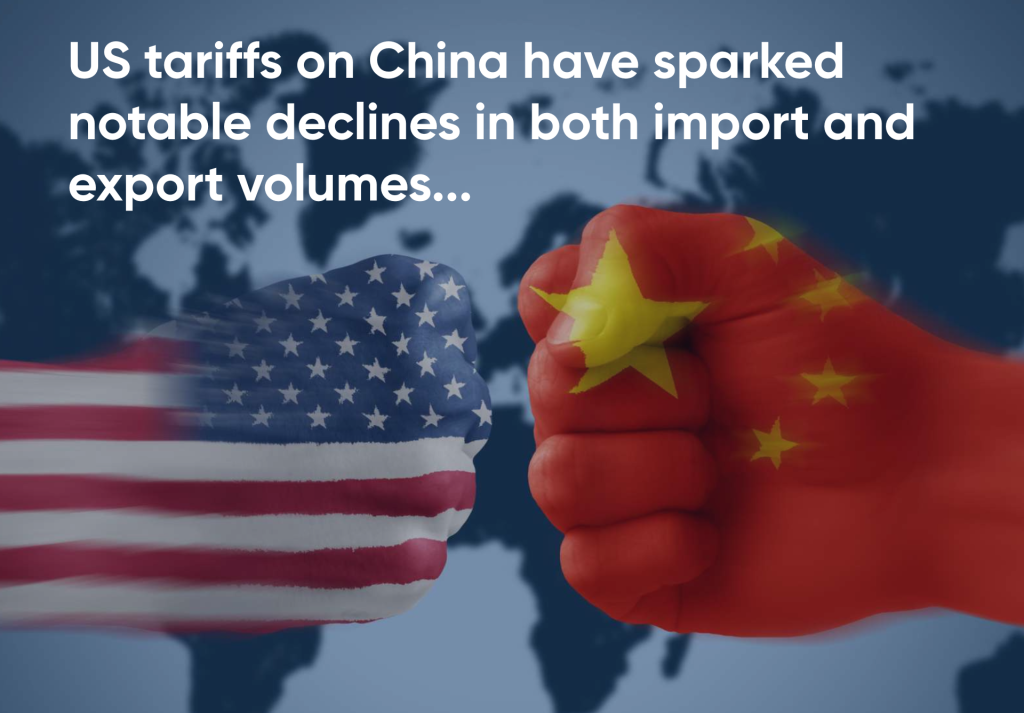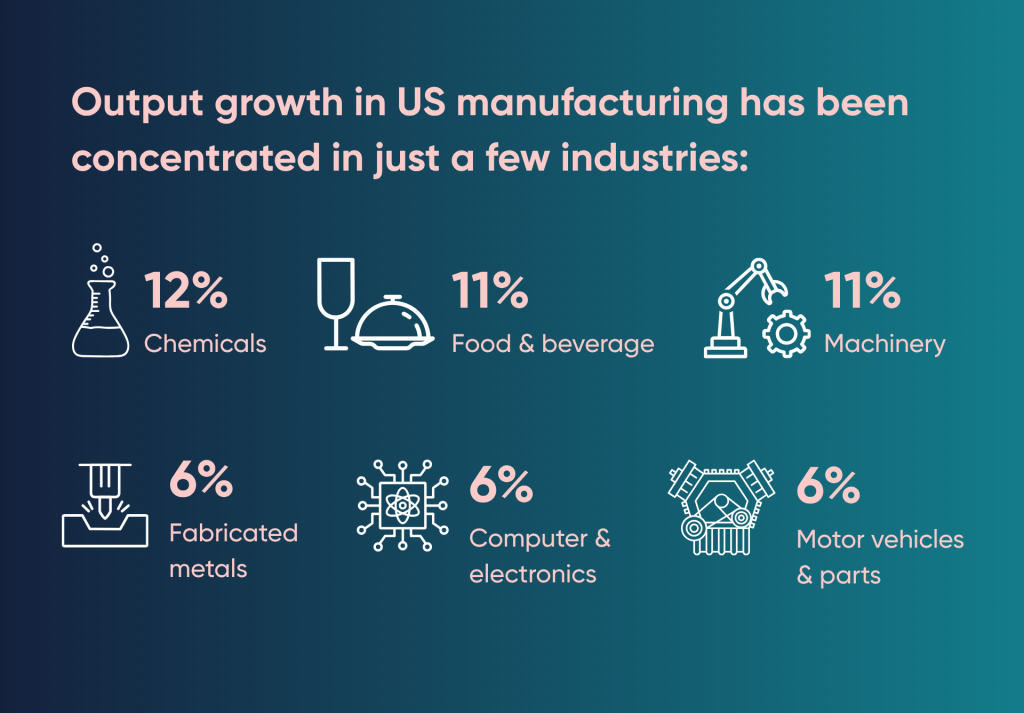Taken alone, manufacturing in the US would be the eighth-largest economy in the world, according to the International Monetary Fund.

GLOBAL STATISTICS & TRADE
After losing the top spot to China in 2010, the US remains the No. 2 country in the world in manufacturing output, with a 16.6% share of global manufacturing output compared to China’s 31.6% as of 2018, according to Statista.
Despite dropping out of first place, US exports continue to grow. From 1990 to 2024, US exports of U.S. manufactured goods grew from $329.5bn in 1990 to about $1.6tn in 2024, according to NAM.
- North America: Exports have grown substantially to the US’ largest trading partners, the North American market.
- Canada: Purchases of US manufactured goods totalled approximately $340–$345bn in 2024, while exports to Mexico in 2024 reached about $418bn.
- China: Manufacturing exports historically represent the largest share of US goods sent to China, including machinery, electronics, vehicles, aircraft and chemicals. In 2022, manufactured goods made up about 41% of total US exports to China, down from roughly 44% before the trade war.

US tariffs on China have sparked notable declines in both import and export volumes, raised prices for consumers and businesses, weakened manufacturing activity, and slowed GDP growth. This year Chinese firms saw their export-to-U.S. volumes collapse – in some sectors by up to 66% – as soaring tariffs (145%) made most shipments economically impossible. Not surprisingly, model projections suggest US imports from China could plunge by ~90%, under a full tariff-plus-retaliation scenario.
OUTPUT
Total output from manufacturing reached an all-time high in 2023, hitting $2.3bn.
Based on the BLS output-by-industry, in 2023, manufacturing output comprised approximately 14.4% of total US industry output, down from 17.6% in 2013. It is projected to shrink further to 13.5% by 2033.

Overall, the US economy is becoming less reliant on manufacturing. The manufacturing sector’s share of US GDP has steadily declined from around 11.3 % in 2015 to 9.7 % by Q1 2025.
EMPLOYMENT
The manufacturing sector employed around 13 milion workers, according to the National Association of Manufacturers (NAM) equivalent to 8% of the US workforce. NAM also stated that manufacturing workers in the US earned approximately $102,629 on average in 2023.
In 2024, manufacturing hovered around 12 million jobs, representing approximately 8–9% of total US employment, with a historical decline from over 10% through earlier decades. Trends reflect long-term automation, productivity gains and structural shifts away from manufacturing’s formerly larger share of US jobs.
The US ranks third worldwide in its manufacturing environment, according to a 100-point scale developed by the Brookings Institution. Factors used in the rankings included pro-business environment, risk index, corruption, open trade policies, tax policies, workforce quality, costs such as fuel and health care, infrastructure, innovation and hazard exposure. The US scored 77 points out of 100, just behind the UK and Switzerland with 78 points each.
The majority of manufacturing firms in the US are small. Of the 239,265 manufacturing firms in the US, only 4,177 had 500 or more employees, meaning that approximately 99% are considered to be small. Three-quarters of the small firms have fewer than 20 employees, according to the US Census Bureau.
These small and mid-size firms have suffered while the largest manufacturers have managed to grow despite challenges, according to McKinsey.
INVESTMENT & FUTURE PROJECTIONS
In 2022, US firms spent about $692bn on R&D. Manufacturing industries spent approximately $372bn, accounting for roughly 54% of all domestic business R&D based on 2021 data from ncses.nsf.gov.
According to the NAM, each $1.00 invested in manufacturing, $1.81 back is injected back into the broader economy.
Looking ahead, the US has significant growth opportunities in semiconductors and microelectronics. The CHIPS and Science Act has already catalysed hundreds of billions in new chip-fabrication projects, targeting production of 20–28% of the world’s advanced logic chips by 2030–2032. Major investments include Intel’s ~$100bn plan in Ohio and Samsung’s $17bn setup in Texas.
In terms of clean energy, federal incentives under the Inflation Reduction Act (IRA) and Infrastructure Law are spurring production of batteries, solar panels, EV components, hydrogen systems and charging infrastructure. US energy storage and solar manufacturing is projected to scale rapidly through the remainder of the decade and create more than 500,000 jobs by 2030 in related industries.





